Histories of innovation in modern building materials typically recount how muscular substances are sculpted in the hands of masters: Eiffel and his iron, Corb and his concrete, Gehry and his shiny titanium scales. Shigeru Ban Architects (SBA), on the other hand, has sought out some of the less heroic products of our age, sometimes using trash as inspiration for the next big thing in structural solutions; the firm works with humble materials, but its final creations are no less accomplished for it.
Wood is one of these seemingly humdrum materials that SBA has long played with, but in the past decade or so, it has skillfully taken advantage of the material’s flexibility. SBA is quite literally taking timber structures to new heights, and is currently at work on both the tallest hybrid timber structure and the largest mass timber development in the world. With work around the world, the firm has pushed the possibilities of what glulam, cross-laminated timber, and other wood products can do—both formally and functionally—proving to skeptical local administrators that timber is a material that can meet and even exceed their building codes.
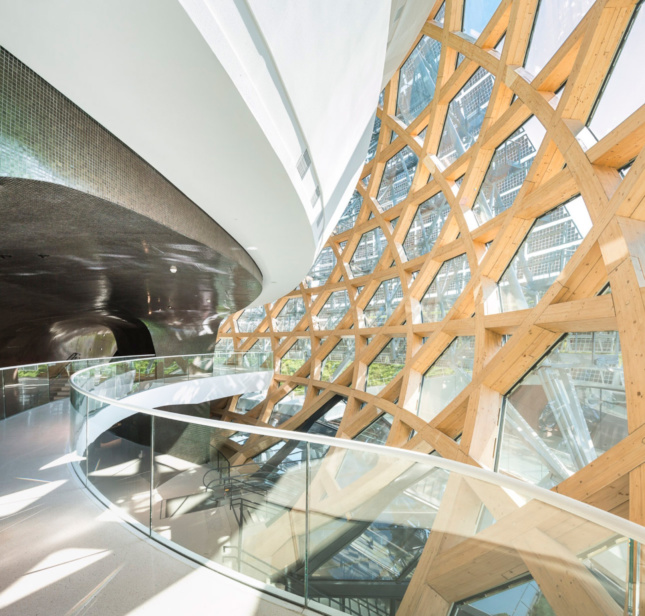
It’s not every firm that has clients with the appetite to replicate some of SBA’s more adventurous projects, but still, the firm has some basic advice for working with timber: Dean Maltz, the partner in charge of SBA’s New York office, said that “timber forces you to collaborate with trades closely,” which, he stressed, is both a challenge and an opportunity. Because mass timber products are prefabricated off-site and still something of an anomaly in much of the United States, it is crucial from the beginning of the design process to work with experienced fabricators. That early investment in collaboration can pay off later, though—Maltz claimed that even the firm’s more complex timber designs were built much faster than comparable steel or concrete structures because timber components can be prefabricated with incredible dimensional precision.
The firm’s use of timber is not arbitrary—rather, it uses wood tactically, albeit sometimes extravagantly, to meet aesthetic and practical goals. While international building codes can be something of a jungle when it comes to mass timber, SBA is blazing trails through the wilderness.

The Aspen Art Museum, which is essentially a big-box building, doesn’t go wild with formal gyrations. Instead, for this low-key Rocky Mountain ski town, SBA let the structure steal the show. A basket-woven wooden screen dapples circulation spaces along the perimeter with Colorado sun, and the firm’s trademark paper tubes make an appearance as playful interior walls and seating. But the firm’s ingenuity really shines in the massive exposed timber roof truss. The space frame–like system is cleverly composed of interlocking planar timber members that curve gently at corners, a detail that allows components to be joined by a single fastener. The resulting mesh allows light to filter down to the spaces below while bolstering the roof against the winter snowfall.
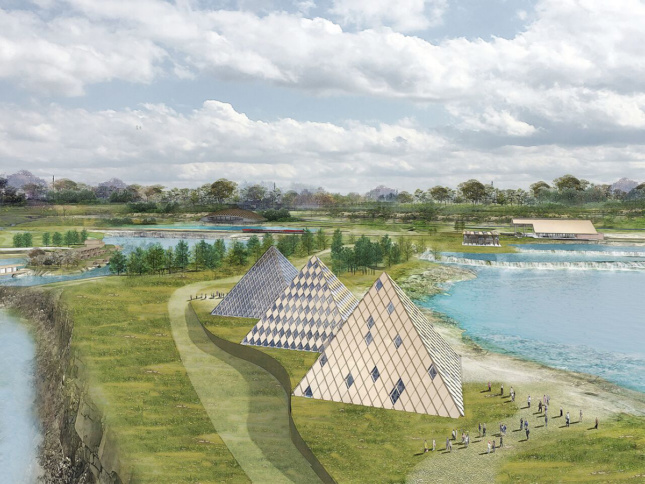
SBA’s most recent commission in the U.S. is for a 420-acre distillery and recreational campus themed after Kentucky Owl bourbon. Like much of the firm’s work, the park’s design blends bold geometry with nods to historical motifs and materials: While the trio of identically sized pyramids at the center of the complex contrasts with the surrounding big sky bluegrass landscape, these exposed timber structures are redolent of 19th-century metalwork, the kind that might have enlivened the original Kentucky Owl distillery. Further, wood columns will be girded by metal loops as in traditional barrel construction, and trusses webbed with curves and loops will add a stylized flourish.
Swatch Headquarters and Omega Facilities
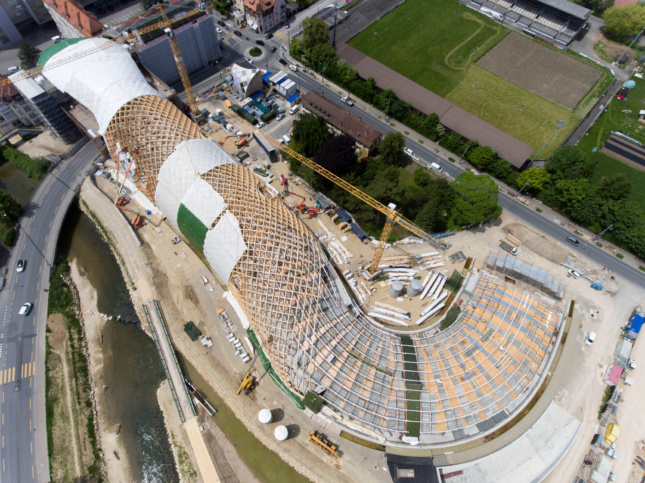
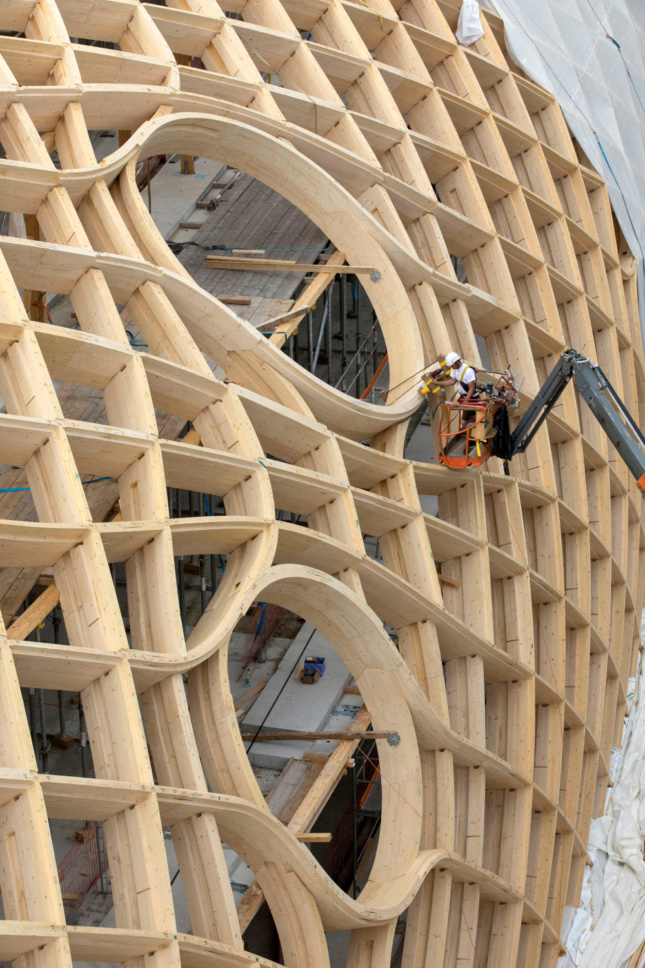
SBA’s forthcoming trio of Swiss buildings for a pair of watch manufacturers (sister companies under the Swatch Group) are a study in contrasts. The new production facilities for Omega are rectilinear and formal, structured by a precisely gridded matrix of exposed engineered timber. The new Swatch headquarters, however, snakes along the Suze River under an arched wood canopy that is punctuated by periodic distortions before leaping across a street to connect to the joint Swatch-Omega Museum, also designed by SBA. Upon its completion later this year, the complex will be the largest timber development in the world.
Shonai Hotel Suiden Terrasse
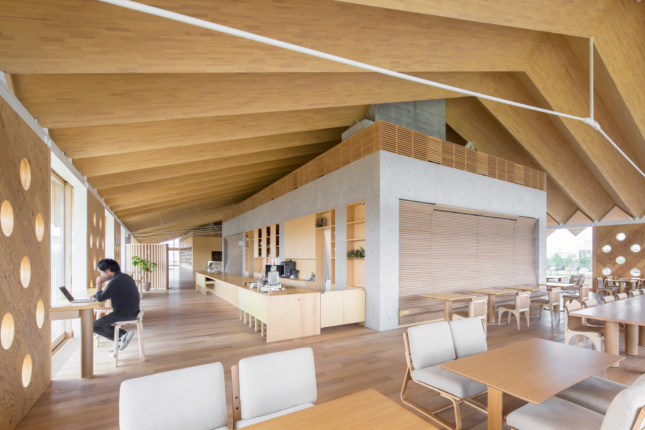
No single SBA project displays the versatility and formal possibilities of hybrid timber structures as much as the Shonai Hotel Suiden Terrasse, completed in September 2018 in northern Japan. The hotel’s spa sits under a low dome supported by timber beams spectacularly interwoven in the same pattern used in La Seine Musicale, while the hotel itself showcases a sober mix of timber, concrete, and brick components. But in a shared central building, a long, open space is covered with a thin pleated wood roof that floats as though it were nothing more than a piece of folded paper.











